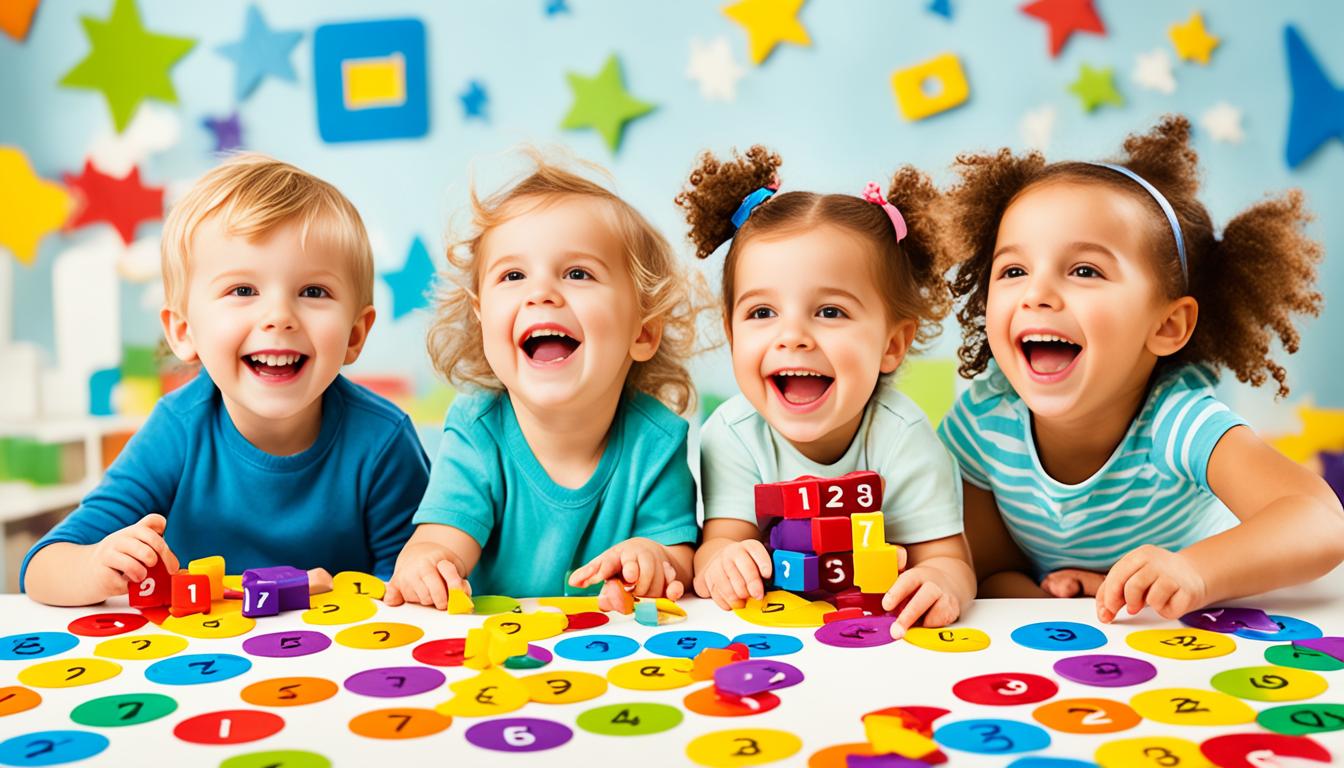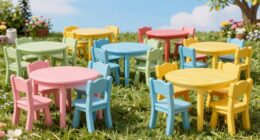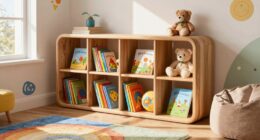Did you know that involving your child in fun educational activities can have a significant impact on their development? Toddler Mazes offer an interactive and engaging way to improve your child’s cognitive skills, problem-solving abilities, and hand-eye coordination. By incorporating Toddler Mazes into playtime, you are introducing a wide range of learning opportunities and bringing joy into your child’s life. Discover the exciting world of Toddler Mazes and how they can enhance your child’s playtime adventures!
Key Takeaways:
- Toddler Mazes enhance cognitive development, problem-solving skills, and hand-eye coordination.
- They promote critical thinking, concentration, and self-confidence in children.
- Various types of Toddler Mazes cater to different interests and learning objectives.
- Mazes can be designed to focus on specific concepts such as shapes, numbers, letters, colors, and more.
- DIY Toddler Mazes offer a cost-effective way to personalize the play experience.
Benefits of Toddler Mazes
Toddler Mazes offer numerous benefits for your child’s development. They promote problem-solving and critical thinking skills as children navigate through the maze, finding the correct path to the end. These mazes also enhance fine motor skills as kids manipulate their fingers to trace the maze lines. Additionally, Toddler Mazes encourage concentration and focus, helping children improve their attention span. They provide a sense of accomplishment and boost self-confidence when kids successfully complete a maze. Overall, Toddler Mazes are a fun and engaging way to support your child’s cognitive and motor development.
Types of Toddler Mazes
Toddler Mazes come in various forms to cater to different interests and learning objectives. Whether your child enjoys traditional pen-and-paper mazes, interactive digital experiences, or hands-on customizable toys, there’s a Toddler Maze out there for every child’s preference.
1. Pen-and-paper mazes:
These classic mazes involve using a pencil to trace the correct path from start to finish. They provide a tactile experience and promote fine motor skills as children navigate the twists and turns.
2. Board game mazes:
Board game mazes take the excitement up a notch by incorporating game pieces that need to be moved through a maze-like board. This adds a strategic element to the fun, enhancing critical thinking and problem-solving skills.
3. Interactive digital mazes:
With the advent of technology, interactive digital mazes on tablets and smartphones have become popular. These digital mazes can be easily accessed through educational apps, providing a modern and engaging twist to traditional mazes.
4. Customizable maze toys:
Customizable maze toys allow children to unleash their creativity by creating their own paths using blocks or tiles. These toys promote spatial awareness, imaginative play, and provide endless opportunities for exploration and experimentation.
Whether it’s a physical maze on paper or a digital maze on a screen, the thrill of guiding their way through challenging paths fosters critical thinking, problem-solving, and cognitive development in toddlers.
Take a look at the table below to see a visual comparison of the types of toddler mazes:
| Types of Toddler Mazes | Description |
|---|---|
| Pen-and-paper mazes | Classic mazes on paper that require children to trace the correct path with a pencil. |
| Board game mazes | Mazes incorporated into board games, where players navigate game pieces through a maze-like board. |
| Interactive digital mazes | Mazes experienced through educational apps on tablets and smartphones for an interactive digital playtime. |
| Customizable maze toys | Toys that allow children to create their own maze paths using blocks or tiles, promoting creativity and exploration. |
As you can see, each type of Toddler Maze offers unique benefits and experiences. Choose the one that suits your child’s interests and learning style, and embark on a maze-filled adventure!
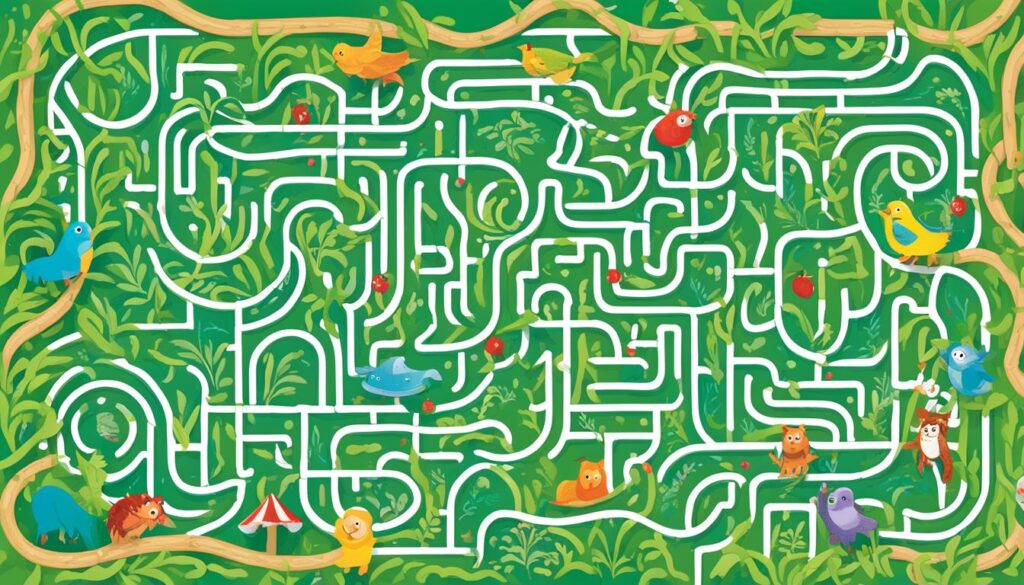
Mazes for Learning Concepts
Toddler Mazes can be designed to focus on specific learning concepts. Shape mazes introduce toddlers to different shapes as they trace the path. Number mazes help children recognize numbers and count as they navigate through the maze. Alphabet mazes aid in letter recognition and early literacy skills. Colors mazes reinforce color recognition and identification. Animal or nature-themed mazes introduce kids to the world around them while enhancing their cognitive abilities. These specialized mazes not only make learning fun but also provide a solid foundation for future academic success.
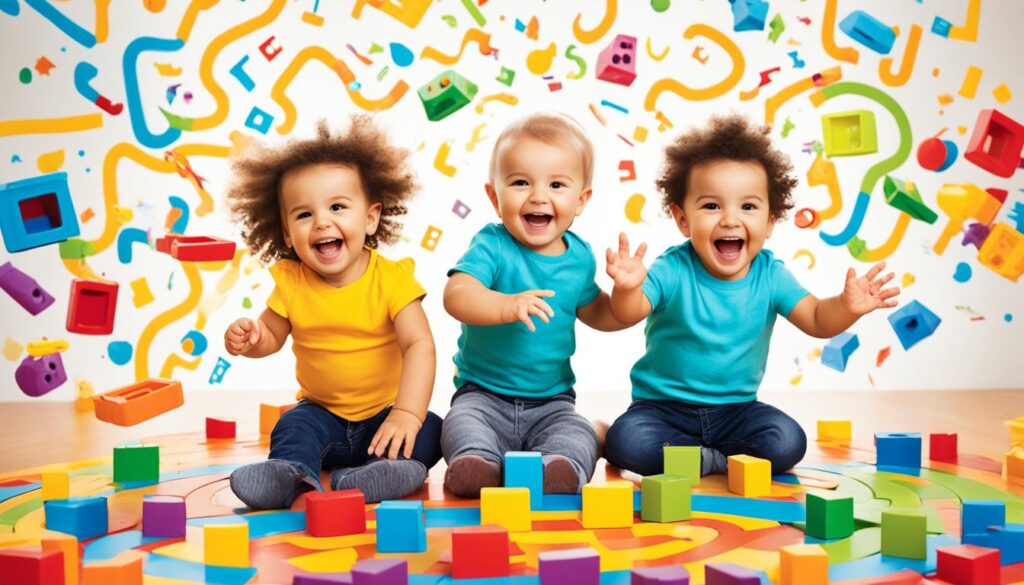
| Maze Type | Learning Concept |
|---|---|
| Shape Mazes | Introduce toddlers to different shapes |
| Number Mazes | Help children recognize numbers and count |
| Alphabet Mazes | Aid in letter recognition and early literacy skills |
| Colors Mazes | Reinforce color recognition and identification |
| Animal or Nature-themed Mazes | Introduce kids to the world around them and enhance cognitive abilities |
DIY Toddler Mazes
Creating your own Toddler Mazes can be a fun and cost-effective activity. You can draw simple mazes on paper or use cardboard, tape, and everyday objects to build a physical maze. Incorporate different textures, like fabrics or sandpaper, to add a sensory element to the maze. DIY Toddler Mazes allow you to personalize the experience and tailor it to your child’s interests and learning goals. They also provide an opportunity for quality bonding time as you work together to create and navigate the maze.
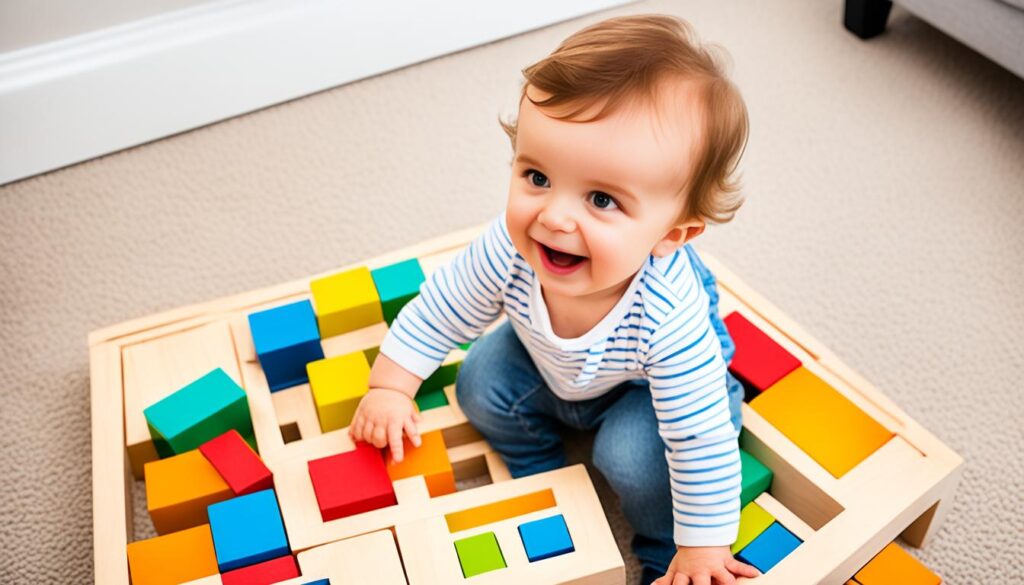
When it comes to DIY Toddler Mazes, the possibilities are endless. You can unleash your creativity and design mazes that captivate your child’s imagination. Use colorful markers or paints to create visually appealing paths. Incorporate pictures or stickers of your child’s favorite animals or characters to make the maze more engaging.
If you prefer a physical maze, gather materials such as cardboard, scissors, and tape. Cut the cardboard into desired shapes and sizes, and create different levels of difficulty by varying the length and complexity of the maze paths. Add arrows or signs to guide your child or create challenges like dead ends to make the maze more exciting.
To enhance the sensory experience, consider adding different textures to the maze. Glue fabric or sandpaper onto the cardboard to create tactile elements that your child can feel while navigating through the maze. This tactile component adds another dimension of sensory exploration to the activity.
DIY Toddler Mazes offer the flexibility to cater to your child’s specific interests and learning goals. Tailor the maze to incorporate themes that align with what your child is passionate about. If they love animals, create a zoo-themed maze where they need to guide a toy animal to its enclosure. If they enjoy outer space, design a maze with rockets and planets that leads the spaceship to its destination. Personalized mazes like these will keep your child engaged and motivated.
In addition to being a fun activity, DIY Toddler Mazes also provide an opportunity for quality bonding time with your child. As you work together to create and navigate the maze, you can engage in conversation, encourage problem-solving skills, and celebrate their achievements. This shared experience strengthens your connection and fosters a sense of accomplishment for both of you.
Get ready to embark on a maze-building adventure with your toddler and watch their excitement soar as they conquer their personalized labyrinth. DIY Toddler Mazes are a fantastic way to combine creativity, learning, and quality time while providing endless fun for your little one.
Online Resources for Toddler Mazes
When it comes to finding engaging and educational Toddler Mazes, the internet is a treasure trove of resources. From interactive maze games to printable worksheets, online platforms cater to every toddler’s maze exploration needs. Here are some fantastic online resources that provide a never-ending supply of Toddler Mazes to keep your child engaged and entertained.
Educational Websites
Visit popular educational websites like ABCmouse and PBS Kids, where you’ll find interactive maze games specifically designed for toddlers. These websites offer a wide range of mazes that combine fun and learning, providing an enjoyable experience for your little one.
Online Platforms
Explore online platforms such as Pinterest and Teachers Pay Teachers, which offer an extensive collection of printable maze worksheets. You can easily download and print these mazes from the comfort of your home, allowing your child to engage in offline maze challenges as well.
Mobile Apps
For convenient access to a variety of Toddler Mazes, mobile apps like Maze Games for Kids are the way to go. Simply download these apps on your smartphone or tablet, and your child can enjoy hours of maze-solving fun on the go.
With these online resources at your fingertips, you can ensure a never-ending supply of engaging Toddler Mazes that foster cognitive development and problem-solving skills. Let the maze adventures continue!
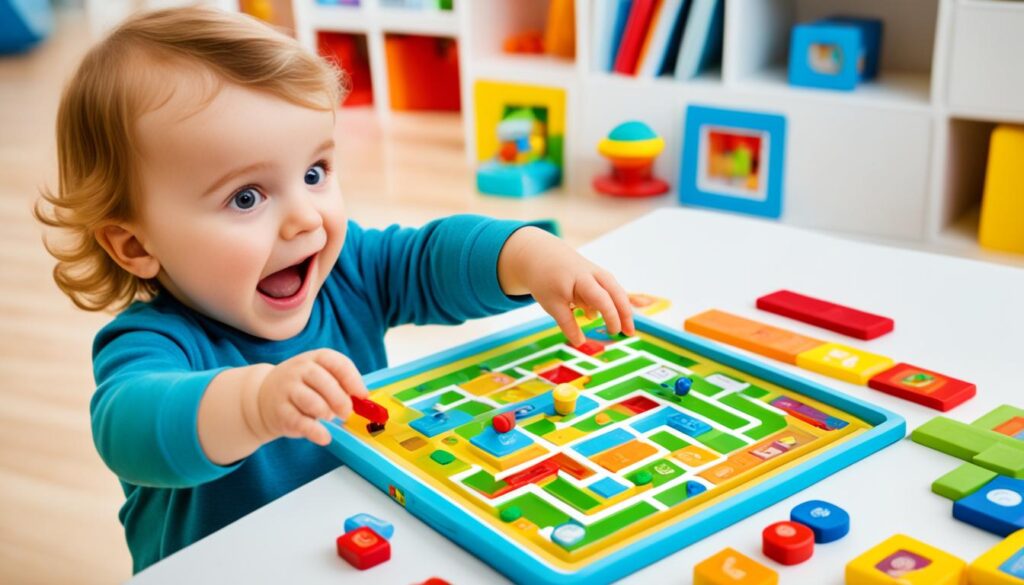
Incorporating Mazes into Playtime
Toddler Mazes are not just standalone activities, but they can also be seamlessly integrated into your child’s playtime routine. By incorporating mazes into playtime, you can maximize your child’s learning potential while fostering their love for exploration and discovery.
Create a Dedicated Maze Station
Set up a dedicated maze station in your child’s play area where they can explore different mazes independently or with friends. This designated space will not only provide easy access to various maze options but also create a sense of excitement and anticipation around maze play.
Fuel Imaginative Play with Themed Mazes
Themed mazes can serve as a springboard for imaginative play, encouraging your child to create stories and scenarios around the maze challenges. Whether it’s a jungle-themed maze where they pretend to be explorers or a space-themed maze where they navigate through the galaxy, themed mazes add an extra layer of engagement to playtime.
Amp Up the Fun with Multi-Faceted Play
Combine mazes with other activities to create a multi-faceted play experience. For example, you can incorporate sensory bins filled with textured materials for your child to explore while simultaneously navigating through a maze. Building blocks can also be used to construct maze structures, giving your child a hands-on approach to problem-solving and creativity.
“Incorporating mazes into playtime allows children to develop essential cognitive and motor skills while having a blast.” – Dr. Emma Johnson, Child Development Specialist
By integrating mazes into playtime, you are providing your child with an opportunity to enhance their problem-solving skills, critical thinking abilities, and hand-eye coordination in a fun and interactive way. As they navigate through the twists and turns of a maze, they are simultaneously honing their cognitive and motor skills.
Remember, playtime is all about exploration, discovery, and the joy of learning. So, let your child dive into the maze world and watch their imagination soar!

| Benefits of Incorporating Mazes into Playtime | How to Incorporate Mazes into Playtime |
|---|---|
| Enhances cognitive development | Create a dedicated maze station |
| Improves problem-solving skills | Fuel imaginative play with themed mazes |
| Develops hand-eye coordination | Amp up the fun with multi-faceted play |
| Fosters creativity and imagination |
Recommended Toddler Mazes Products
When it comes to purchasing Toddler Mazes, we have curated a list of recommended products that will enhance your child’s maze experience. These products offer a variety of engaging options for your little one to explore and enjoy.
Maze Board Games
If your child loves hands-on experiences, maze board games are an excellent choice. These games provide intricate maze designs that challenge your child’s problem-solving skills. Two popular options in this category are:
- “Mouse Trap”: A classic game that combines planning, strategy, and a bit of luck as players race their mice through an exciting maze of contraptions.
- “Perplexus Junior”: A mesmerizing 3D maze that requires players to twist and turn a transparent sphere to guide a small ball through a series of challenging obstacles.
Magnetic Maze Toys
For a portable and mess-free option, magnetic maze toys are perfect. These toys typically come with a magnetic wand that children can use to navigate through the maze. One popular magnetic maze toy is:
“Melissa & Doug Magnetic Wand Number Maze”: This colorful and educational toy features sliding beads that children can guide along the painted tracks to match numbers to quantities, strengthening their number recognition and counting skills.
Activity Books
If you prefer a compact format with a variety of maze challenges, activity books are a great choice. These books often include mazes of different difficulty levels, making them suitable for various age groups. One highly recommended activity book is:
“My First Big Book of Mazes”: This book offers a collection of captivating mazes that introduce children to the world of puzzles and problem-solving. With colorful illustrations and age-appropriate challenges, it provides hours of maze-solving fun.
Printable Mazes and Customized Toys
If you’re looking for a wide selection of maze options, online marketplaces like Etsy offer printable maze worksheets and customized maze toys. These resources allow you to personalize the maze experience and tailor it to your child’s interests and learning goals. Simply search for “printable toddler mazes” or “custom maze toys” on Etsy to discover an array of creative options.
By considering these recommended Toddler Mazes products, you can provide your child with engaging and educational maze experiences that will stimulate their cognitive development and spark their joy for learning.
Safety Considerations for Toddler Mazes
While Toddler Mazes can be fun and educational, we must prioritize the safety of our little ones. Here are some key safety considerations to keep in mind:
- Choose age-appropriate mazes: Select mazes that are specifically designed for toddlers. These mazes are tailored to their developmental stage, ensuring that the challenges are suitable and enjoyable for them.
- Avoid small parts: Steer clear of mazes that contain small parts or components that could pose a choking hazard. Opt for mazes with larger, child-friendly pieces to minimize any potential risks.
- Supervise your child: It’s important to supervise your child during maze playtime. This not only helps prevent accidents but also ensures that they are using the materials correctly and safely. Stay engaged and provide guidance as needed throughout their maze exploration.
- Regularly inspect the maze toys: Take the time to regularly inspect the maze toys for any signs of wear and tear. Check for loose parts or sharp edges that may compromise your child’s safety. If you notice any damage, consider replacing or repairing the toy to maintain a safe play environment.
By taking these safety considerations into account, you can enjoy the benefits of Toddler Mazes with peace of mind, knowing that your child’s well-being is protected. Let’s create a safe and engaging maze experience for our little explorers!
Conclusion
Toddler Mazes offer an enchanting and educational play experience for young children. By engaging in these captivating mazes, your child can enhance their cognitive development, problem-solving skills, and creativity while having hours of endless fun.
Whether you opt for ready-made maze products or choose to create your own DIY mazes, incorporating Toddler Mazes into your child’s routine can have a positive impact on their overall development. These mazes not only provide a joyful and interactive playtime activity but also foster important skills that will benefit them in various aspects of life.
So why wait? Start exploring the world of Toddler Mazes today and witness the remarkable growth of your child’s learning abilities and joy. With the array of options available, from physical to digital, and customizable to themed mazes, there is a perfect maze waiting to captivate your little one and spark their curiosity. Embrace the endless possibilities that Toddler Mazes offer and watch as your child’s learning journey takes flight!
Can Flash Cards Be Used in Combination with Toddler Mazes for Learning?
Yes, engaging toddler flash cards can be used in combination with toddler mazes for learning. These interactive tools can help toddlers develop their cognitive skills, improve memory, and learn new concepts while having fun. By integrating flash cards into maze activities, children can engage in a more dynamic and hands-on learning process.
FAQ
What are the benefits of Toddler Mazes?
Toddler Mazes promote problem-solving and critical thinking skills, enhance fine motor skills, encourage concentration and focus, provide a sense of accomplishment, and boost self-confidence.
What types of Toddler Mazes are available?
Toddler Mazes come in various forms, including traditional pen-and-paper mazes, board game mazes, interactive digital mazes, and customizable maze toys.
Can Toddler Mazes be designed to focus on specific learning concepts?
Yes, Toddler Mazes can be designed to focus on learning concepts such as shapes, numbers, letters, colors, and animals or nature themes.
How can I create my own Toddler Mazes?
You can create your own Toddler Mazes by drawing simple mazes on paper or using cardboard, tape, and everyday objects to build a physical maze. You can also incorporate different textures to add a sensory element.
Where can I find online resources for Toddler Mazes?
There are many educational websites, mobile apps, and online platforms like Pinterest and Teachers Pay Teachers that offer interactive maze games and printable maze worksheets for toddlers.
How can I incorporate mazes into playtime?
You can set up a dedicated maze station, use themed mazes for imaginative play, and combine mazes with other activities like sensory bins or building blocks.
What are some recommended Toddler Mazes products?
Recommended Toddler Mazes products include maze board games, magnetic maze toys, and activity books with a variety of maze challenges. Online marketplaces like Etsy also offer printable maze worksheets and customized maze toys.
What safety considerations should I keep in mind when it comes to Toddler Mazes?
It’s important to choose age-appropriate mazes, avoid small parts that could pose a choking hazard, supervise children during maze play, and regularly inspect maze toys for any wear and tear.





